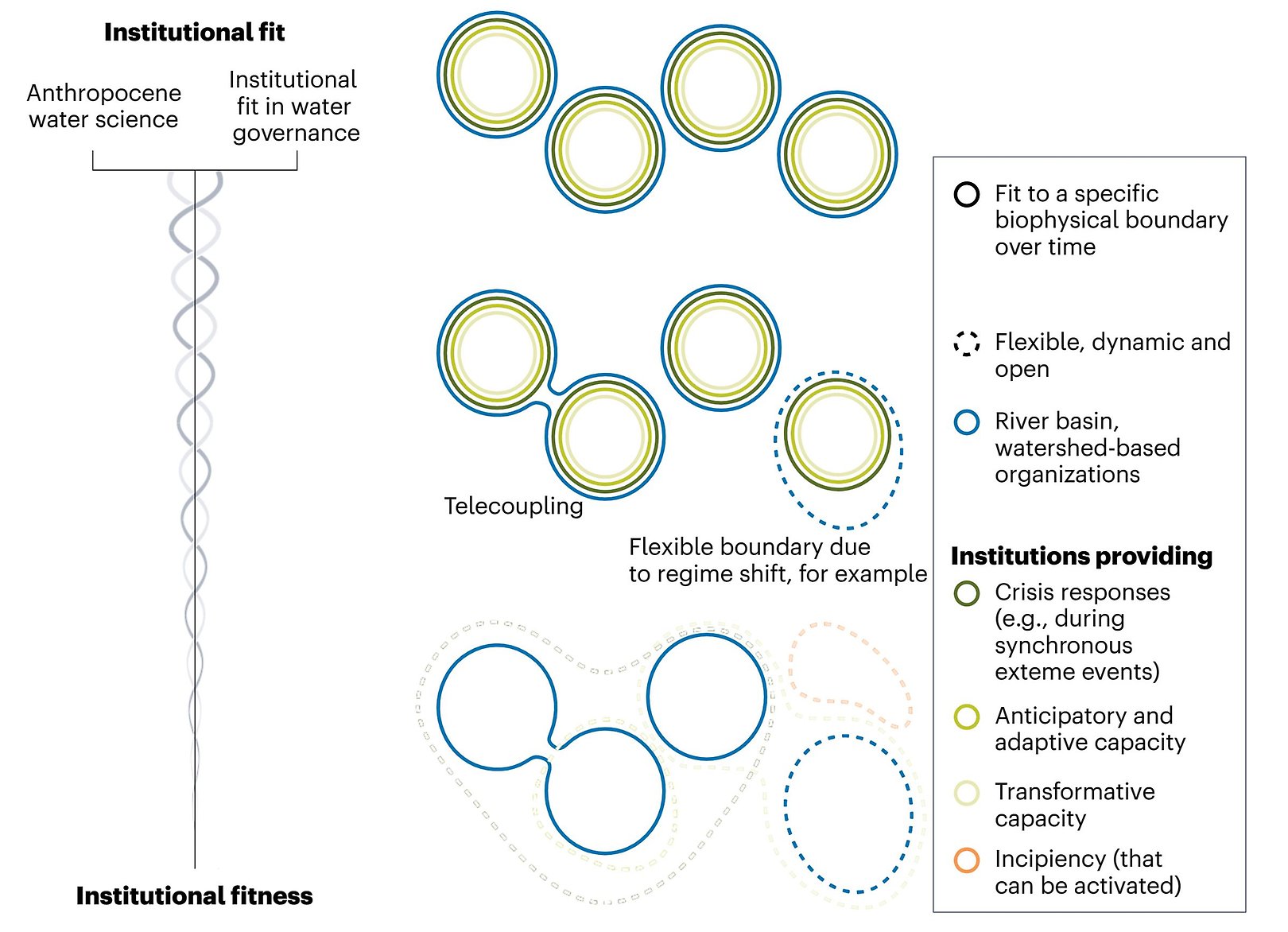Water governance
From “precipitation-sheds” to “participation-sheds”

Everyone affected by water-related decisions should have the opportunity to participate in the decision-making process, argue researchers. Photo: Udom Pinyo via Canva.
Today, hydrological cycles are increasingly interconnected across larger spatial scales, sometimes even globally. This calls for rethinking how we study and govern water to enhance resilience and sustainability, argues a new study.
- Water issues often have long-distance effects and time lags between actions and consequences, making decision-making challenging
- Governance bodies often struggle to address the significant human-induced changes in water systems
- The authors suggest addressing these challenges requires new approaches to participation, deliberation, and collaboration in water governance
In meteorology, a “precipitation-shed” refers to the upwind ocean or land surface that supplies moisture to the atmosphere, which later falls as precipitation in downwind areas. To address current water challenges, we might also need to learn a new term: “participation-shed.” This is a key concept put forward in a study published in Nature Water.
The study is the result of teamwork among a large group of Centre researchers and colleagues from Canada, Germany, South Africa, Norway, the USA, Australia, Belgium, and the UK.
“We learned so much during this collaboration,” says Michele-Lee Moore, lead author of the new study. “The breadth of expertise and competencies involved – from hydrologists and climate scientists to resilience scholars and policy experts – allowed us to comprehensively assess the intertwined challenges of water governance in a globalized world.”
So, what is a participation-shed? It refers to the idea that everyone affected by water-related decisions should have the opportunity to participate in the decision-making process. This is easier said than done. Watershed or river basin scales can be too narrow or local, while larger-scale governing bodies can be too broad to address specific basin issues (e.g., how households meet daily needs) or to ensure democratic legitimacy.
We learned so much during this collaboration. The breadth of expertise and competencies involved allowed us to comprehensively assess the intertwined challenges of water governance in a globalized world.
Michele-Lee Moore, lead author
Currently, precipitation-sheds and participation-sheds do not always align. Governance bodies often struggle to address the significant human-induced changes in water systems globally. For example, deforestation in one country can reduce moisture recycling and alter rainfall patterns, impacting agriculture in distant countries – a process called telecoupling.
“Despite this, our new study found little to no evidence to support the idea of abruptly re-scaling governance from the river basin organizations and watershed-based bodies that have been widely promoted for the past two decades to fit a different global dynamic that has newly emerged or is newly understood,” the researchers write.
Improved coordination
In fact, trying to align institutions with all the things happening in an increasingly global and interconnected world may be impossible because these dynamics constantly change, leading to constant boundary shifting. Instead, the study suggests improving coordination among existing governing organizations, strengthening resilience capacities, and expanding their mandates.
The study covers a lot of ground, documenting global to local changes in water science and their governance implications. Research shows the need for inclusive governance that ensures marginalized communities can participate in decision-making and access water for diverse needs, including non-human uses, and highlights the need for governing bodies to ensure changes to water cycles lead to improved collaboration rather than conflict.

Moving from fit to fitness. Shifting from institutional fit to institutional fitness for water governance in the Anthropocene, to better consider the broader institutional needs to support river basin organisations and watershed-based governance bodies under different cross-scale spatial and temporal dynamics. (Figure designed by Agnes Pranindita.)
In summary, in our globalized and human-dominated world, water issues often have long-distance effects and time lags between actions and consequences, making decision-making challenging. The authors call for globally coordinated monitoring efforts that include not just the kinds of data typically used in water decision-making, but also include multiple ways of knowing the large, distant effects of change in water cycles. But they also suggest addressing these challenges requires new approaches to participation, deliberation, and collaboration in water governance, prompting the authors to advocate for a shift:
“From emphasizing how governance can ‘fit’ a closed, biophysical boundary, we need to move towards a stronger consideration of institutional ‘fitness’ through flexibility, responsiveness and anticipatory capacity to better support water resilience and sustainability,” they conclude.
Read "Moving from fit to fitness for governing water in the Anthropocene" »
Moore, M.L., Wang-Erlandsson, L., Bodin, Ö., Enqvist, J., Jaramillo, F., Jónás, K., Folke, C., Keys, P., Lade, S.J., Mancilla Garcia, M., Martin, R., Matthews, N., Pranindita, A., Rocha, J.C. & Vora, S. 2024. Moving from fit to fitness for governing water in the Anthropocene. Nature Water.







